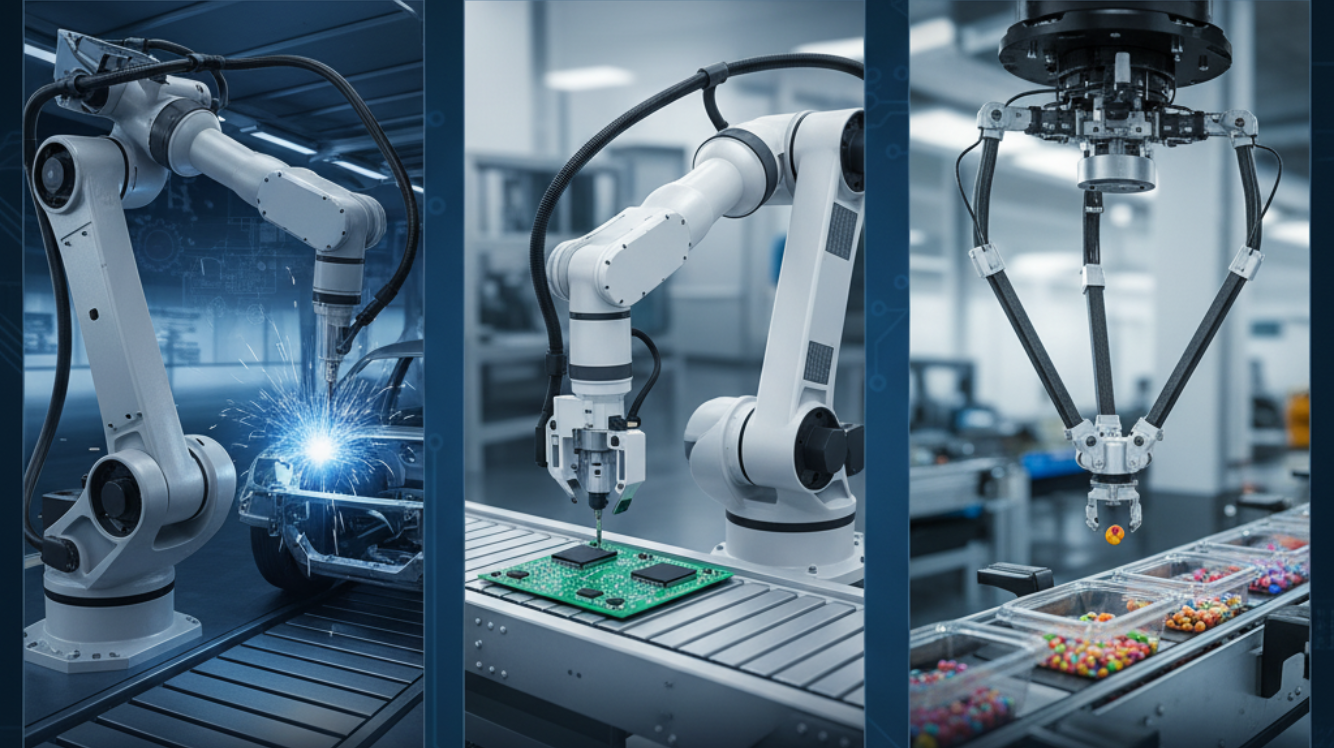
Table of Contents
We all can agree on one thing for sure: Robotics has changed the way industries work. From assembling cars to packaging chocolates, robotic arms are everywhere. But have you ever wondered what types of robotic arms exist and why industries choose one over the other? Today, let’s talk about it in a simple, no-jargon way and explore how companies like FANUC India are shaping modern manufacturing.
In this article, we will be talking about types of robotic arms, while also discussing the different types of industrial robots and which type of robot arm can suit your business. So whether you are thinking about a 6-axis articulated robot arm or a delta robot arm, we have got them covered, along with others. Let’s begin!
We hope you weren’t expecting anything else, because a robotic arm is, quite literally, a mechanical arm that can move, lift, rotate, and perform tasks similar to a human arm. But guess what? It's faster, more precise, and tireless. So when people talk about the “type of robot arm,” they are actually referring to the specific design, joints, and range of motion that make a robot suitable for certain tasks.
One key aspect to understand is robotic joint types. You can think of joints like the elbow or shoulder in your own arm. Just that, robotic arms use different types of joints: revolute joints for rotation, prismatic joints for sliding motions, and sometimes even spherical joints for more complex angles. The combination of these joints is what actually decides how flexible a robot is, what it can reach, and how fast it can perform a task.
Want to hear a good example? So, for instance, a 6-axis articulated robot is called that because it has six rotary joints, allowing it to move almost like a human arm but with incredible speed and precision. We at FANUC India offer a wide range of such robots, which can literally lift anywhere from a few kilograms to over 700 kilograms, depending on the model.
So whether it’s picking up small electronic parts or welding car panels, understanding the types of robotic arms and their joint types is crucial before choosing the right machine.
Let’s break down the major types of robotic arms you’ll encounter in modern industries. We will keep it simple, so you can visualize them easily.
At number one, we have probably the most common type you will see in factories, which is an articulated robot arm. It's built like a human arm with multiple joints, which are usually more than 5. These joints are so amazing that they give it flexibility and reach, making it suitable for welding, painting, assembly, and even handling heavy materials.
For example, a 6-axis articulated robot is an advanced version of this, with six joints providing maximum freedom of movement, which often leads people to compare how many axis in vmc machine setups offer similar multi-axis capabilities. FANUC India’s M-710iC series, for example, is a popular 6-axis articulated robot used in automotive assembly lines. This one can handle heavy payloads, move with great precision, and literally work for years!
SCARA stands for Selective Compliance Assembly Robot Arm. And wait, don’t let the fancy name scare you, because this is basically a robot that moves quickly in a horizontal plane. For this, you can imagine a machine that can pick up objects and place them somewhere else faster than anyone could by hand.
This robot arm works wonderfully for industries like electronics and packaging. These are compact, precise, and perfect for high-speed pick-and-place tasks!
If you’ve ever watched chocolate or candy being sorted on a fast-moving conveyor belt, that’s probably a delta robot arm in action. You will see how these are lightweight, high-speed arms shaped like a spider or parallel mechanism.
Delta robots are perfect for handling small items quickly and efficiently. Our robots are designed for just that! These robots are used in packaging, food processing, and pharmaceuticals. You will see how they excel in not just speed, but precision. After all, they are the favorite for industries with rapid assembly lines for a reason!
Cartesian robots, also known as gantry robots, move in straight lines along the X, Y, and Z axes. To put it simply, you can think of them as giant printers or cranes. They are ideal for tasks that demand a linear movement over large areas, such as 3D printing, palletizing, or material handling.
With our Cartesian robots, you get precision and workspace coverage, which is great for large-scale operations.
Last but not least, the newest addition to the robotic family is the cobot. So unlike traditional robots, cobots are designed to work alongside humans safely. So naturally, they are smaller, lighter, and equipped with sensors to avoid hitting or colliding with humans.
So, where do these robots actually work? Here’s a simple breakdown:
The beauty of modern robotics is that each type of robot arm is designed for a specific application, especially when integrated with the right industrial automation equipment. So picking the wrong one, an actually slow production, or increased costs. That’s why knowing the types of robotic arms and their capabilities is really important!
Choosing a robot is like choosing a car. You need to know your requirements first. Here’s a simple way to decide:
Here at FANUC India support industries in India with over 200 robot models. So whether you are looking for a delta robot arm, a 6-axis articulated robot, or a cobot, we can guide you to the best solution.
Robotic arms are no longer a futuristic concept. They’re a reality in every modern industry. Knowing the types of robotic arms and robotics joint types helps you choose the right robot for your application. Whether it's the flexible articulated robot arm, the fast delta robot arm, or a 6-axis articulated robot for heavy-duty operations, each robot has a unique purpose.
And companies like FANUC India actually make it easier for businesses to adopt these solutions with products you can wholeheartedly rely on. The next time you see a robot welding a car or sorting chocolates, you’ll know exactly what kind of robot arm it is and why it’s chosen for the job.
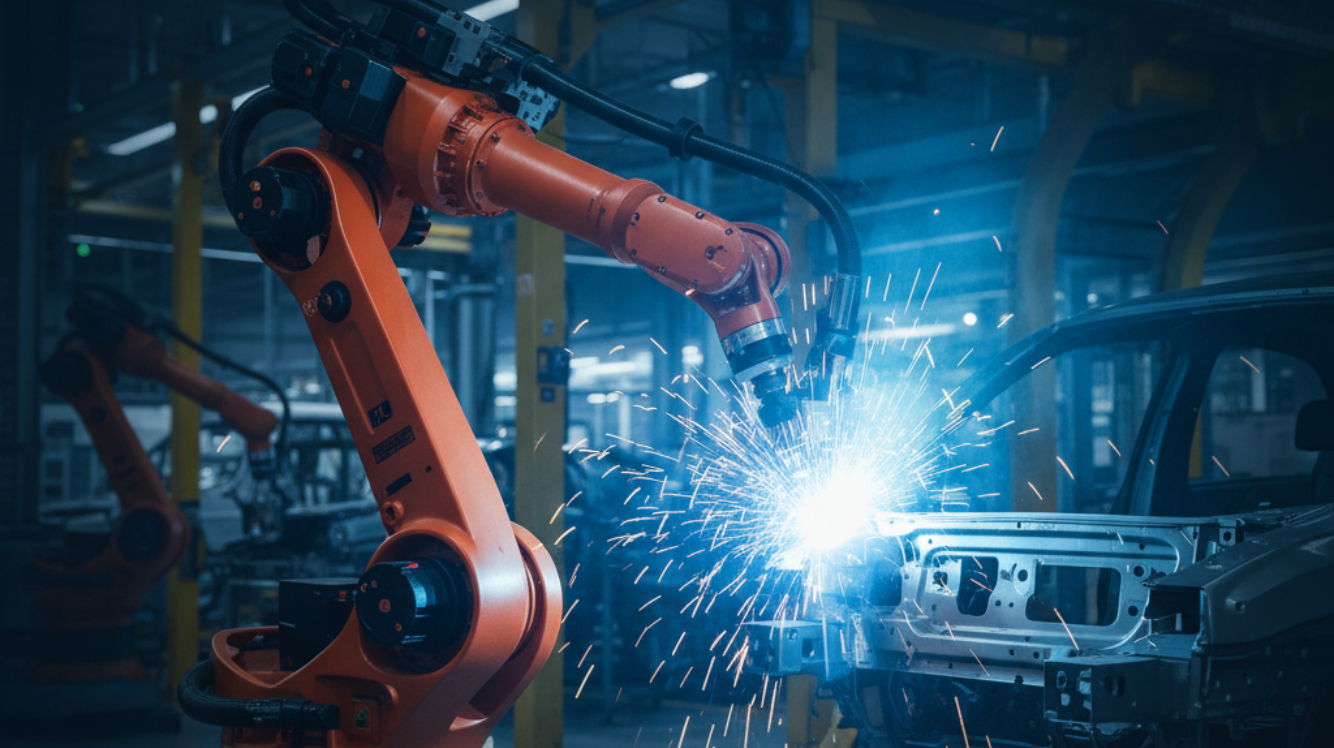
Understand the main types of industrial robots — articulated, SCARA, delta, and cobots. Learn their applications, advantages, and impact on modern manufacturing
Know More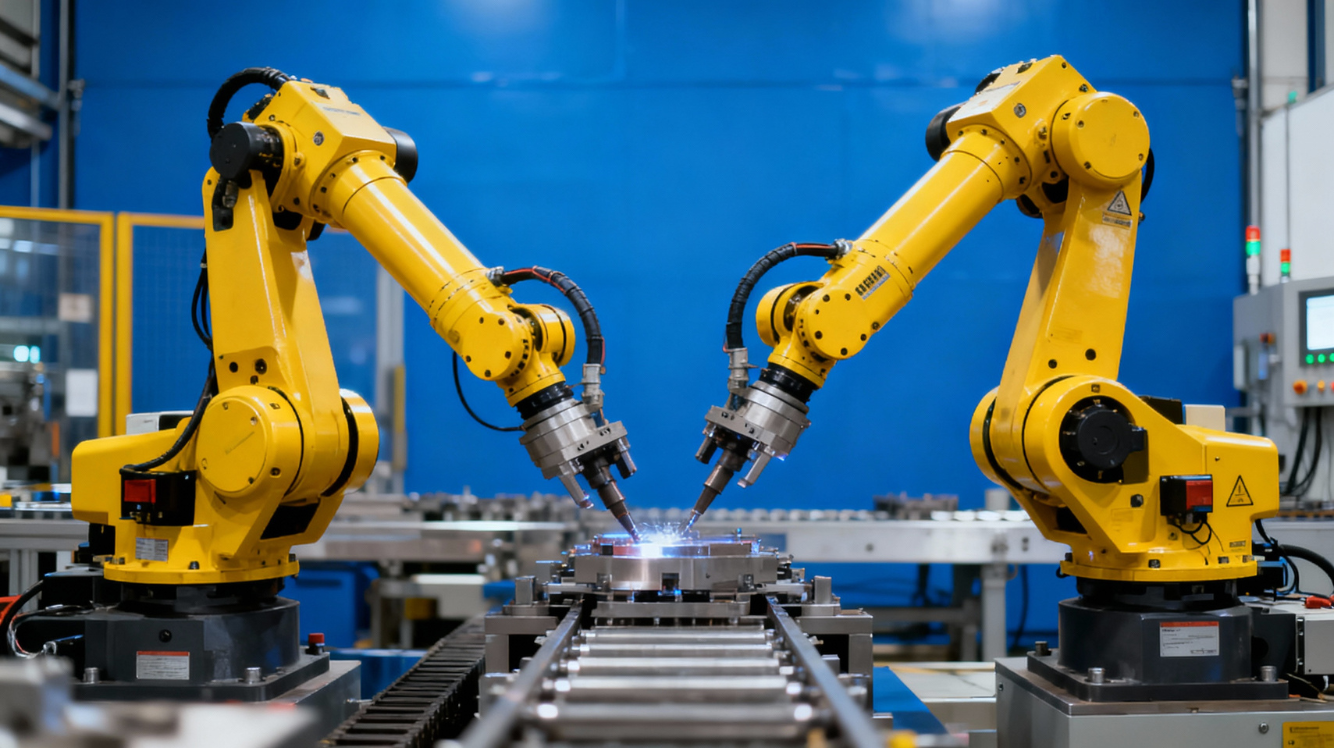
Learn the four main industrial automation types—fixed, programmable, flexible, and integrated—and how they transform modern manufacturing systems.
Know More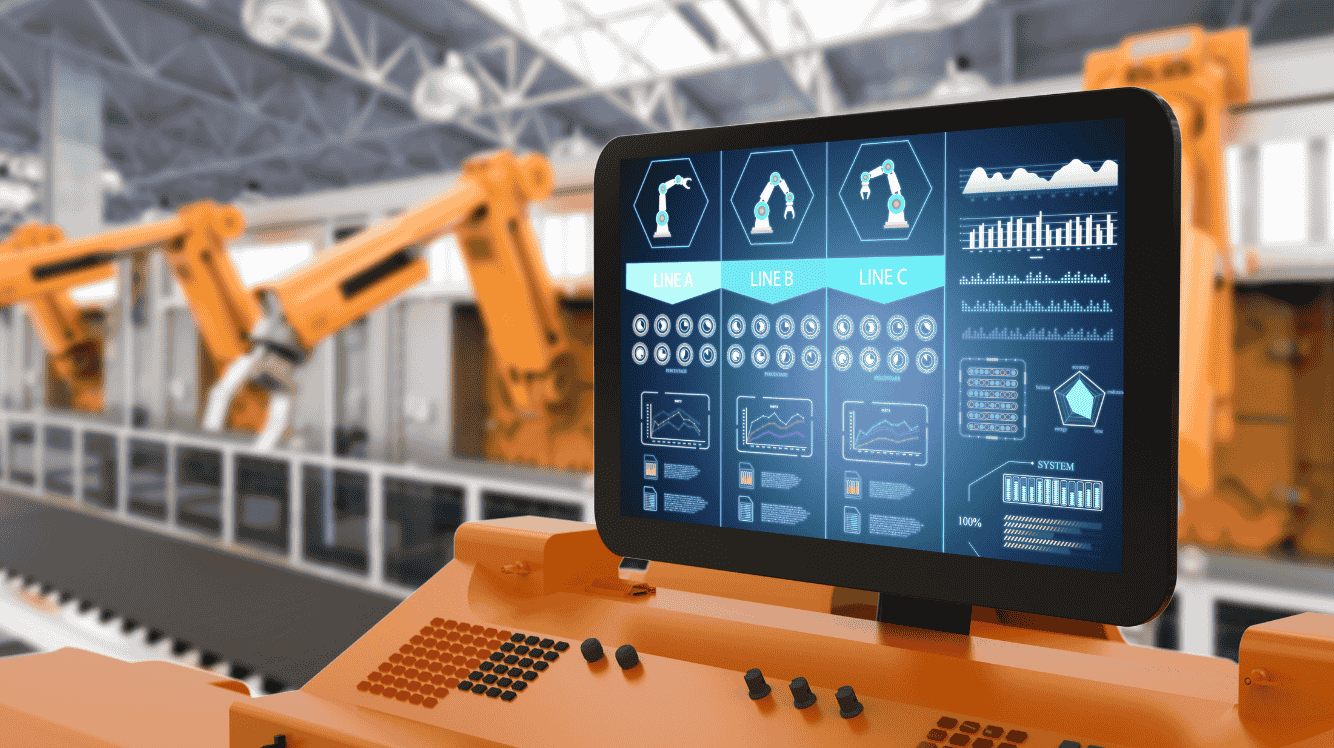
Find out the top 10 ways industrial automation enhances manufacturing with higher productivity, accuracy, and reduced operational costs.
Know More
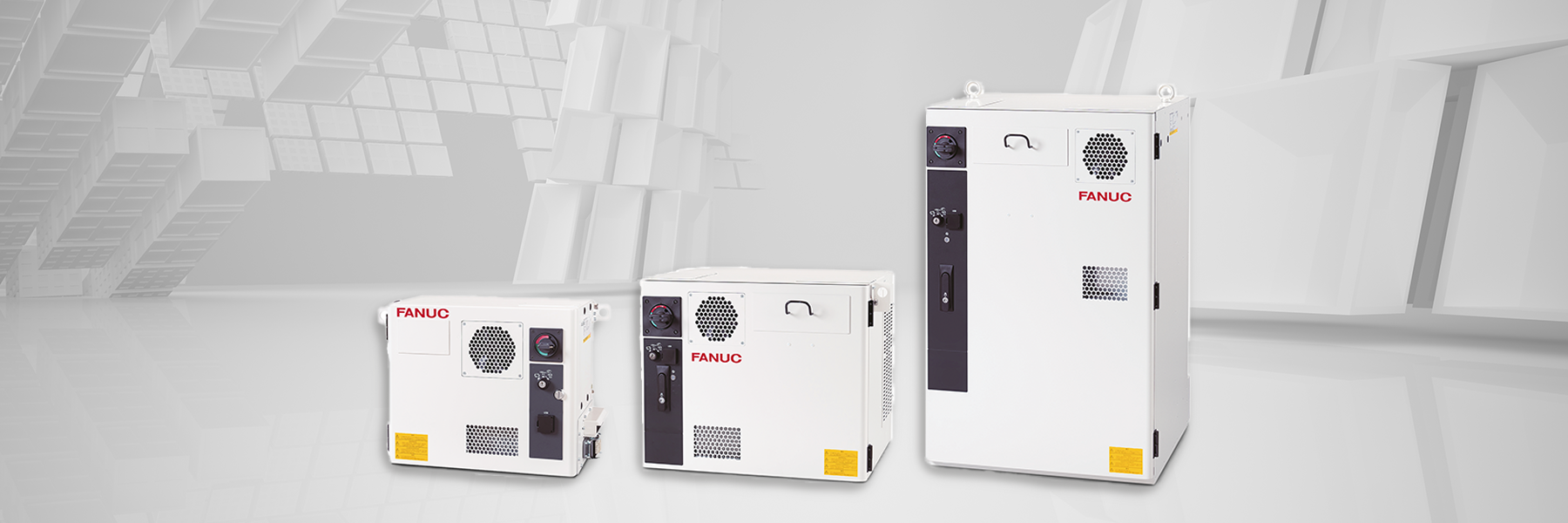
.png)